What we´re reading… June 2023
The June issue of Transplantation, the official Journal of ILTS and the Transplantation Society is out now.
A must-read for anyone working in the field of liver transplantation.
Article selections by Ryan Chadha, Sadhana Shankar, Eleonora DeMartin, Carmen Vinaixa, Abdul Hakeem, David Nasralla and Dhupal Patel.
HEPATOLOGY
Journal of Hepatology
Randomized, controlled clinical trial of the DIALIVE liver dialysis device versus standard of care in patients with acute on chronic liver failure
Background & Aims: Acute-on-chronic liver failure (ACLF) is characterized by severe systemic inflammation, multi-organ failure and high mortality rates. Its treatment is an urgent unmet need. DIALIVE is a novel liver dialysis device that aims to exchange dysfunctional albumin and remove damage- and pathogen-associated molecular patterns. This first-in-man randomized controlled trial was performed with the primary aim of assessing the safety of DIALIVE in patients with ACLF, with secondary aims of evaluating its clinical effects, device performance and effect on pathophysiologically relevant biomarkers. More
Transplantation
International Liver Transplantation Society Global Census: First Look at Pediatric Liver Transplantation Activity Around the World
Background: Over 16,000 children under the age of 15 died worldwide in 2017 because of liver disease. Pediatric liver transplantation (PLT) is currently the standard of care for these patients. The aim of this study is to describe global PLT activity and identify variations between regions. More
Hepatology
Magnetic resonance Elastography-Based prediction model for hepatic decompensation in NAFLD; a Multi-Center cohort study
Background and aims:Magnetic resonance elastography (MRE) is an accurate, continuous biomarker of liver fibrosis, however, the optimal combination with clinical factors to predict the risk of incident hepatic decompensation is unknown. Therefore, we aimed to develop and validate an MRE-based prediction model for hepatic decompensation for patients with non-alcoholic fatty liver disease (NAFLD). More
SURGERY
Transplantation
Experience With Establishing a Robotic Donor Hepatectomy Program for Pediatric Liver Transplantation
Background: The benefits of minimal invasive donor hepatectomy, especially for left lateral sectionectomy (LLS) have been unequivocally demonstrated. Moreover, donors in pediatric liver transplantation (LT) are usually parents who need to recover quickly to take care of the child. There are inherent limitations to conventional laparoscopic surgery including surgeon’s experience with advanced laparoscopic surgery and steep learning curve which limits the wide application of minimal invasive donor hepatectomy. We share our experience of establishing a program of robotic donor hepatectomy (RDH) and achieving proficiency in performing RDH for pediatric LT. More
Liver Transplantation
Comparison of pure laparoscopic donor right posterior sectionectomy versus right hemihepatectomy for living donor liver transplantation
Right posterior section (RPS) graft for living donor liver transplantation (LDLT) is an alternative graft in a live liver donor with insufficient remnant left lobe (LL) volume and portal vein anomaly. Although there have been some reports regarding pure laparoscopic donor right posterior sectionectomy (PLDRPS), no study has compared PLDRPS versus pure laparoscopic donor right hemihepatectomy (PLDRH). The aim of our study was to compare the surgical outcomes of PLDRPS vs. PLDRH at centers achieving complete transition from open to laparoscopic approach in liver donor surgery. More
BMC Trials
End‑ischemic hypothermic oxygenated perfusion for extended criteria donors in liver transplantation: a multicenter, randomized controlled trial—HOPExt
Background: Given the scarce donor supply, an increasing number of so-called marginal or extended criteria donor (ECD) organs are used for liver transplantation. These ECD liver grafts are however known to be associated with a higher rate of early allograft dysfunction and primary non-function because of a greater vulnerability to ischemia-reperfusion injury. The end-ischemic hypothermic oxygenated machine perfusion (HOPE) technique may improve outcomes of liver transplantation with ECD grafts by decreasing reperfusion injury. More
ANESTHESIOLOGY AND CRITICAL CARE
Journal of Hepatology
The novel SALT-M score predicts 1-year post-transplant mortality in patients with severe acute-on-chronic liver failure
Background & aims: Patients with acute-on-chronic liver failure grades 2/3 (severe ACLF) have 28-day mortality ranging from 30-90%. Though liver transplantation (LT) has demonstrated a survival benefit, the scarcity of donor organs and uncertainty regarding post-LT mortality among patients with severe ACLF may cause provider hesitation to proceed with LT. We developed and externally validated a model to predict 1-year post-LT mortality in severe ACLF, called the Sundaram ACLF-LT-M probability score, and estimated the median length of stay (LoS) after LT (ACLF-LT-LoS). More
Canadian Journal of Anesthesia
Perioperative clinical practice in liver transplantation: a cross-sectional survey
Purpose: The objective of this study was to describe some components of the perioperative practice in liver transplantation as reported by clinicians. Methods: We conducted a cross-sectional clinical practice survey using an online instrument containing questions on selected themes related to the perioperative care of liver transplant recipients. We sent email invitations to Canadian anesthesiologists, Canadian surgeons, and French anesthesiologists specialized in liver transplantation. We used five-point Likert-type scales (from “never” to “always”) and numerical or categorical answers. Results are presented as medians or proportions. More
Journal of the American College of Cardiology
Morbidity and Mortality in Adult Fontan Patients After Heart or Combined Heart-Liver Transplantation
Background: An increasing number of adult Fontan patients require heart transplantation (HT) or combined heart-liver transplant (CHLT); however, data regarding outcomes and optimal referral time remain limited. Objectives: The purpose of this study was to define survivorship post-HT/CHLT and predictors of post-transplant mortality, including timing of referral, in the adult Fontan population. More





